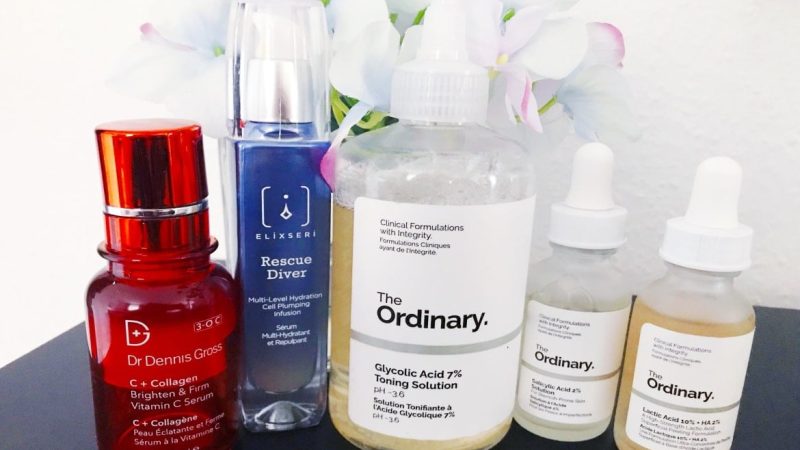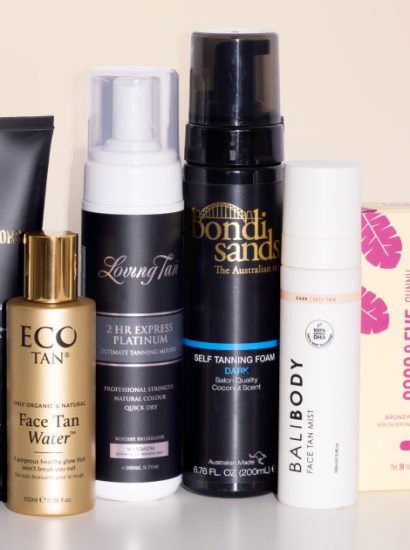Lactic acid has quickly become a must-have ingredient in modern skincare routines. As one of the gentlest alpha hydroxy acids (AHAs), lactic acid skin care offers the perfect balance between effective exfoliation and deep hydration. It’s ideal for beginners, sensitive skin, and anyone looking to achieve a smoother, brighter complexion without harsh side effects.
Derived from milk and fermented vegetables, lactic acid is known for its dual-action power: exfoliating dead skin cells while improving the skin’s natural moisture factor. In this guide, we’ll walk you through how lactic acid works, its key skin benefits, the best ways to incorporate it into your regimen, and our picks for top lactic acid skin care products.
How Lactic Acid Works on Your Skin
Lactic acid is a water-soluble alpha hydroxy acid (AHA) that works by breaking down the bonds between dead skin cells, allowing them to slough off more easily. This process reveals fresher, smoother skin underneath.
But unlike some stronger acids like glycolic acid, lactic acid has a larger molecular size, which means it penetrates the skin more slowly and gently. This makes it less irritating, especially for first-time users or people with sensitive skin.
Additionally, lactic acid is a humectant, meaning it attracts and retains moisture, helping to strengthen the skin barrier and maintain hydration.
Lactic Acid at a Glance:
- Type: Alpha Hydroxy Acid (AHA)
- Molecular Size: Larger than glycolic acid = gentler
- pH Range for Effectiveness: 3.5–4.0
- Ideal Use: 1–3 times per week, depending on concentration
Key Benefits of Lactic Acid Skin Care
Lactic acid offers a wide range of skin benefits, making it a versatile ingredient in both daily and weekly routines.
a. Gentle Exfoliation
Removes dead skin cells to reduce dullness, unclog pores, and promote healthy cell turnover.
b. Brighter, More Even Skin Tone
Fades dark spots, acne scars, and pigmentation over time, revealing more radiant skin.
c. Smoother Texture
Minimizes the appearance of fine lines, bumps, and rough patches for visibly smoother skin.
d. Improved Hydration
Attracts moisture to the skin, making it ideal for dry or dehydrated skin types.
e. Reduced Breakouts
By keeping pores clear, lactic acid can help prevent and reduce acne, blackheads, and whiteheads.
f. Stimulates Collagen Production
Over time, it may boost collagen for firmer, more youthful skin.
Who Should Use Lactic Acid Skin Care?
Lactic acid is suitable for almost all skin types, but it particularly shines for:
- Dry or dehydrated skin (due to its moisturizing properties)
- Sensitive skin (gentler than glycolic acid)
- Mature skin (for improved tone and fine lines)
- Acne-prone skin (helps unclog pores without stripping)
Note: Those with rosacea or broken skin should consult a dermatologist before use.
How to Use Lactic Acid in Your Skin Care Routine
Using lactic acid correctly is key to reaping its benefits without irritation. It can be found in cleansers, toners, serums, masks, and even moisturizers.
Step-by-Step Guide:
- Cleanse with a gentle, non-acid-based cleanser.
- Apply lactic acid serum or toner after drying your skin.
- Follow up with a moisturizer to lock in hydration.
- Use sunscreen in the morning — lactic acid increases sun sensitivity.
Frequency:
- Beginners: 1–2 times per week
- Experienced users: Up to 3 times per week
- Avoid combining with strong retinoids or other exfoliating acids on the same day.
Pairing Tips:
- Works well with niacinamide for calming
- Avoid mixing with vitamin C or retinol unless formulated together
Lactic Acid vs. Other Exfoliating Acids
Let’s compare lactic acid with other common AHAs and BHAs to see how it stands out:
| Acid | Type | Strength | Best For | Notes |
| Lactic Acid | AHA | Mild | Dry, sensitive, or aging skin | Hydrating and gentle |
| Glycolic Acid | AHA | Strong | Oily, acne-prone skin | Deeper penetration |
| Salicylic Acid | BHA | Moderate | Clogged pores, blackheads | Oil-soluble, deep pore cleanse |
| Mandelic Acid | AHA | Very Mild | Very sensitive or dark skin tones | Larger molecule, minimal irritation |
Lactic acid is often the best starter acid for beginners or those prone to irritation.
Top Lactic Acid Skin Care Products (2025 Picks)
Looking to try lactic acid? Here are some of the top-rated and dermatologist-recommended lactic acid products available today:
The Ordinary Lactic Acid 5% + HA
- Affordable, minimal ingredients
- 5% concentration ideal for beginners
- Contains hyaluronic acid for added hydration
Sunday Riley Good Genes All-In-One Lactic Acid Treatment
- High-end formula with 5% lactic acid
- Helps with dullness, dark spots, and fine lines
- Gentle enough for daily use
Paula’s Choice Skin Perfecting 8% AHA Gel
- Combines lactic acid with glycolic acid for added power
- Smoother skin in a few weeks
- Lightweight and non-greasy
Biossance Squalane + Lactic Acid Resurfacing Night Serum
- Combines lactic acid with squalane for hydration
- Ideal for sensitive, dry skin
- Vegan and clean-beauty approved
REN Ready Steady Glow Daily AHA Tonic
- Toner with lactic acid and willow bark extract
- Great for daily exfoliation
- Clean and cruelty-free formula
Side Effects and Safety Tips
While lactic acid is considered safe and gentle, there are still precautions to keep in mind:
Possible Side Effects:
- Redness or tingling on first use
- Flaking or peeling with overuse
- Increased sun sensitivity
Tips to Stay Safe:
- Always patch test before first use.
- Use SPF 30+ daily, especially when using acids.
- Avoid using lactic acid on open wounds or active breakouts.
Important: If irritation persists, discontinue use and consult a dermatologist.
Conclusion
Lactic acid skin care is a game-changer for those seeking smoother, more radiant skin without the harshness of stronger chemical exfoliants. It offers a wide range of benefits — from gentle exfoliation and brightening to hydration and anti-aging support.
Whether you’re new to acids or looking to upgrade your routine, lactic acid is a smart, effective choice. With proper use, you’ll notice improved tone, texture, and overall skin health — all without sacrificing comfort or hydration.
Add it to your routine, start slow, and always wear sunscreen — your skin will thank you.
FAQs
1. Can I use lactic acid every day?
If your skin tolerates it well and the concentration is low (around 5%), yes. Otherwise, 2–3 times a week is usually sufficient.
2. Can lactic acid be used with retinol?
It’s best to use them on alternate nights to avoid irritation. Unless formulated together, combining them can cause over-exfoliation.
3. Does lactic acid help with acne scars?
Yes, by promoting cell turnover and fading dark spots, it can help reduce the appearance of post-acne pigmentation.
4. Is lactic acid safe during pregnancy?
Generally, yes. Lactic acid is pregnancy-safe, but always check with your doctor, especially if using other active ingredients.
5. What concentration of lactic acid is best for beginners?
Start with 5% or less. Higher concentrations (10% or more) should be used gradually and less frequently.
Also read: Inside COOLA Carlsbad: Sun Care Innovation from Southern California





